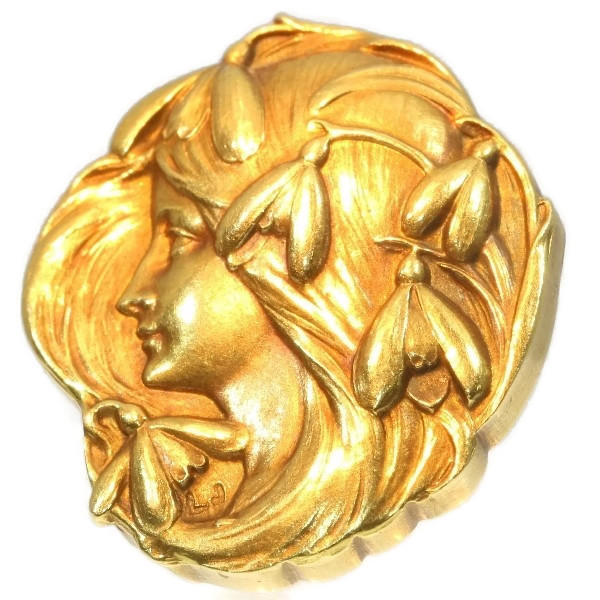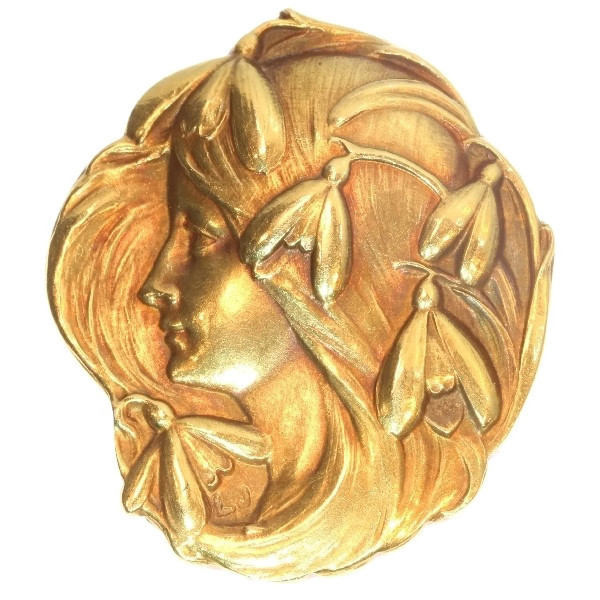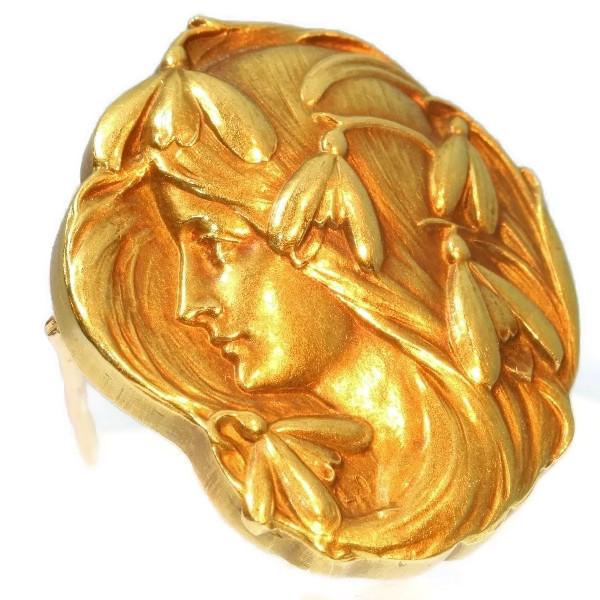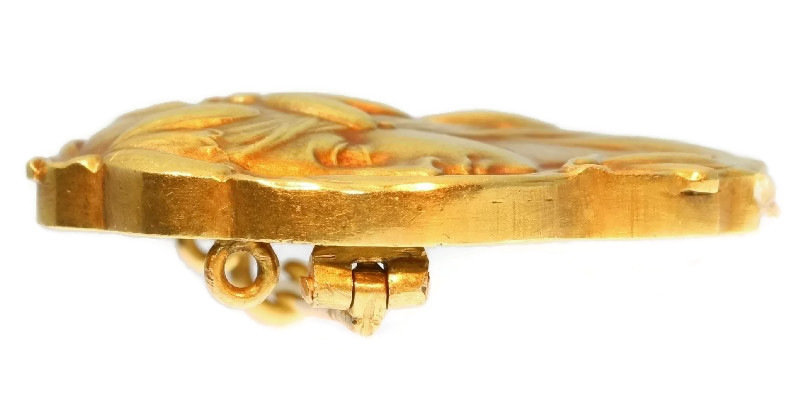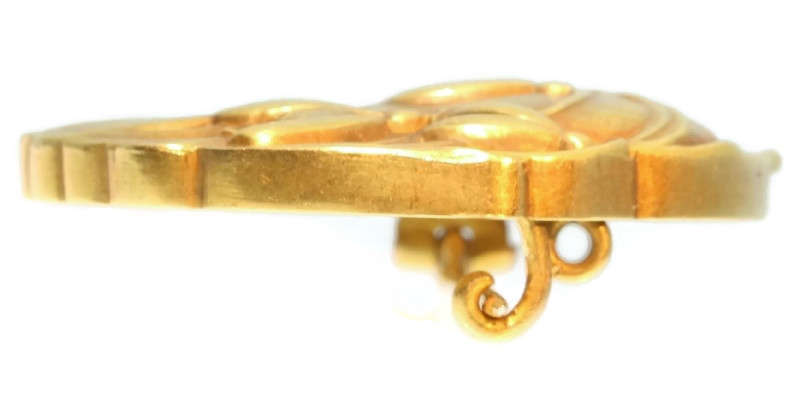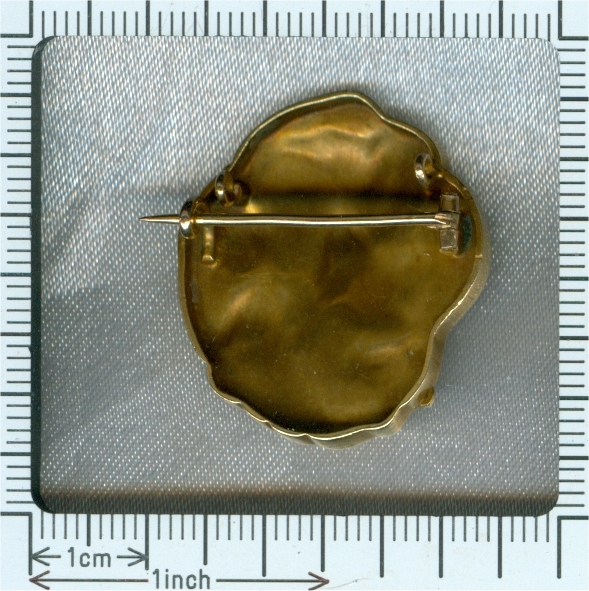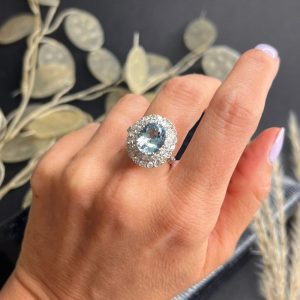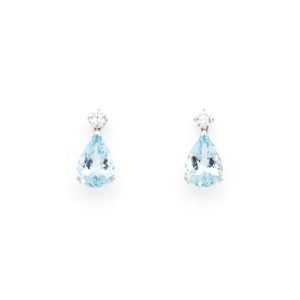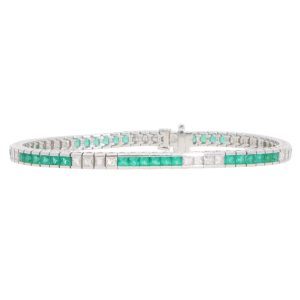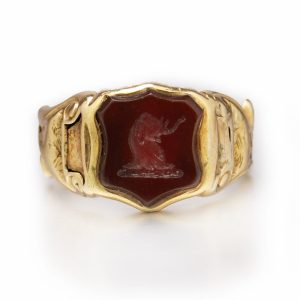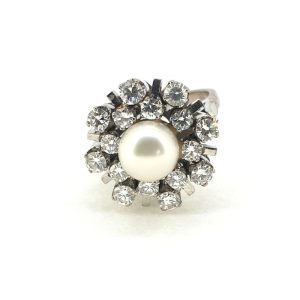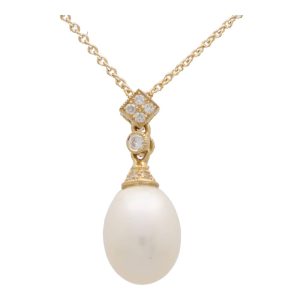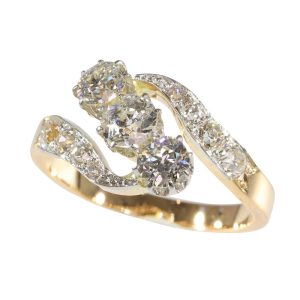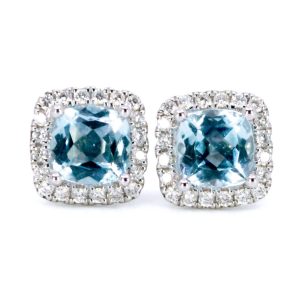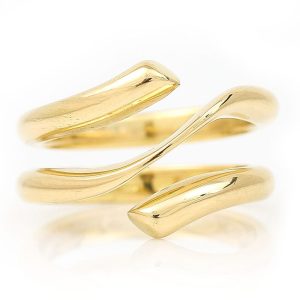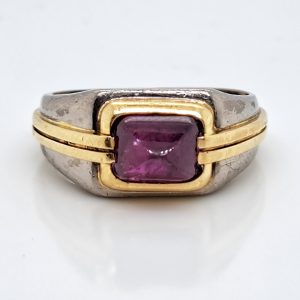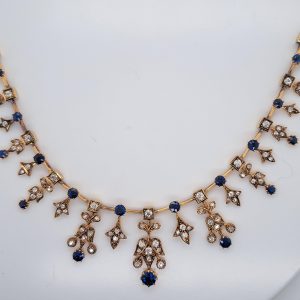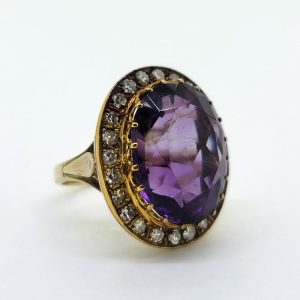Antique Art Nouveau Woman’s Head Brooch, 18ct Yellow Gold
This 18ct yellow gold Art Nouveau brooch from 1890 is a depiction of a new beginning as the blossoming snowdrops announce the arrival of spring while arching all over the right side of the bas-relief of a fair maiden in profile. Her locks lashing through the wind will always remind you to let your hair down once in a while.
Antique jewellery object group: brooch and pendant
Condition: excellent condition
Country of origin:Although it does not carry any legible control marks we believe this to be of Belgian origin.
Style: Art Nouveau РArt Nouveau (French for New Style) is an international movement and style of art, architecture and applied art Рespecially the decorative arts Рthat peaked in popularity at the turn of the 20th century (1890–1905).
The name “Art Nouveau” is French for “new art”. It is also known as Jugendstil, German for “youth style”, named after the magazine Jugend, which promoted it, and in Italy, Stile Liberty from the department store in London, Liberty & Co., whichpopularised the style, and in Holland as ‚ÄúSla-olie-stijl‚Äù, Dutch for ‚Äúsalad oil style‚Äù after a advertisement poster for this product that was made in that style.
A reaction to academic art of the 19th century, it is characterized by organic, especially floral and other plant-inspired motifs, as well as highly stylized, flowing curvilinear forms. Art Nouveau is an approach to design according to which artistsshould work on everything from architecture to furniture, making art part of everyday life. Although Art Nouveau fell out of favour with the arrival of 20th-century modernist styles, it is seen today as an important bridge between the historicism ofNeoclassicism and modernism.
Style specifics: Art Nouveau – Although Art Nouveau took on distinctly localised tendencies as its geographic spread increase some general characteristics are indicative of the form. A description published in Pan magazine of Hermann Obrist’s wall-hanging Cyclamen(1894) described it as “sudden violent curves generated by the crack of a whip”, which became well known during the early spread of Art Nouveau.
Subsequently, not only did the work itself become better known as The Whiplash, but the term “whiplash” is frequently applied to the characteristic curves employed by Art Nouveau artists. Such decorative “whiplash” motifs, formed by dynamic,undulating, and flowing lines in a syncopated rhythm, are found throughout the architecture, painting, sculpture, and other forms of Art Nouveau design.(from: Wikipedia)
Period: ca. 1890
Source of inspiration: Mother Nature
Theme: Woman’s head with snowdrops
Material: 18ct yellow gold
Extra information: Snowdrops – At the end of the winter when nature seems dead and the earth shrunk by cold, as an emblem of promise and consolation, the snowdrop is the first to announce spring and long bright days to come.
In England this flower is also known as candlemas-bells or fair maids of February. The reason for this is that the flower normally blooms at the second day of February that is called candlemas day. On this day, fair maids in procession and decorated with white flowers bring wreaths of snowdrops to church.
“The follow two, all robed in white,
And each must snowdrops carry
This, some think, why these flowers we call
Fair maids of February”.
According to the legend when Eve sat at the cold barren ground weeping in memory of all the lovely flowers of the lost paradise an angel approached her and tried to comfort her. Ever since the first sin, flowers didn’t bloom anymore in the Garden of Edin and it was snowing continously. The angel blew at one of the falling fine white snowflakes and it fell on earth as a clean, small flower. And wherever the angel wings touched the earth a crowd of white flowers sprouted through the snow. Comforted by the sight of these beautiful flowers new hope blossomed in Eve’s heart.
The Russian Empress Catherine The Great (1729-1796) was a great lover of snowdrops. Once, she installed a guard to save a particularly large snowdrop to prevent it from being plucked. The guard post remained there year after year even when the reason why was long forgotten. Then when the Emperor Alexander II (1818-1881) noticed this guard post and wondered why there was a guard post while there was nothing to protect, that the original reason was recovered.
In some parts of Europe snowdrops are given with St. Valentine.
Monogram: LJ – We looked for information to see who’s behind this monogram but without result. We would appreciate to receive any information on him/her.
Hallmarks: No trace.
Dimensions: height 3,07 cm (1,21 inch)
Weight: 11,70 gram (7,52 dwt)
Product SKU
AD-14177-0016
Sold
Sold Out

